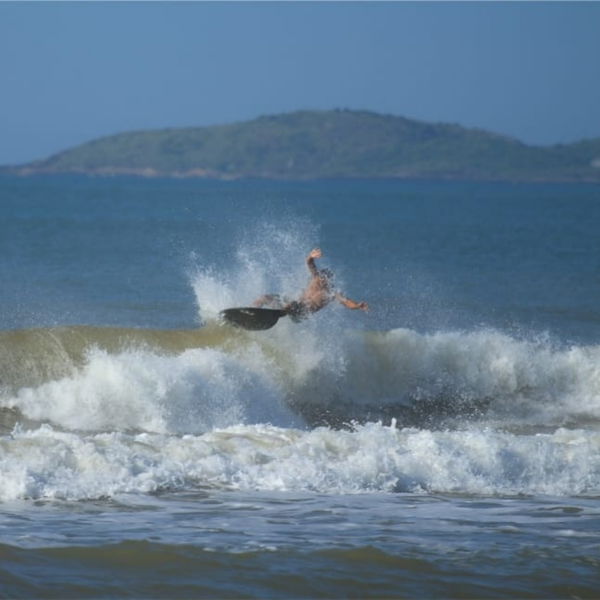

Frankfurt based Christian Meissner discovered his passion for surfing, far away from his inland home. Nine years ago, he capitalized on his passion, making surfboards in Offenbach. His business, Mio, stands for Main Ingredients Organic and focuses on using sustainable materials, like fast-growing paulownia wood. Mio’s surfboards are crafted with eco-friendly practices, promoting a greener approach to surfing.
Meissner’s mission is to bring sustainability to the forefront of the surfing industry, by offering environmentally conscious alternatives to traditional surfboards. Despite being far from the ocean, Meissner’s dedication and commitment have allowed him to make a positive impact. The surfing community is better now with his innovative and eco-friendly surfboard designs.
ADVERTISEMENT
Article continues below this ad
Surfing evolves sustainably as professionals embrace eco-friendly practices
In an interview with Bloomberg, the 51-year-old board maker highlighted “In a sign that the material does the job. Professional foil surfer Alex Soto won second place in hydrofoil freestyle. At the Global Kitesports Association’s World Tour last year using a Mio board,”. This feat emphasizes the sustainability and high performance of Mio boards. The ecological footprint of the sport contradicts the nature-loving image of surfers, prompting an increasing number of board makers to cater to greener preferences.
View this post on Instagram
While the exact environmental impact of surfing is challenging to quantify, a 2009 study suggested that a surfer’s carbon footprint is approximately 50% higher. The primary reason might be due to travel emissions. Austria’s Woodboard and Australia’s FCS Fins are among the companies adopting sustainable practices, utilizing certified wood and recycled materials, respectively. Meissner, who shifted from shaping petrochemical-based foam to paulownia wood, explained, “The dust from shaping petrochemical material made me sick, so I started experimenting.”
ADVERTISEMENT
Article continues below this ad
Paulownia wood: A sustainable solution for a greener future
Paulownia trees are native to Asia but cultivated in Europe, and can also be found in North America. It grows rapidly, reaching heights of 3-6 meters per year and maturity within a decade. They are lightweight, warp-resistant wood, suitable for various applications, including kiteboards and musical instruments. Anja Hartelt from iPaulownia, a Spanish paulownia wood supplier, notes its escalating demand. Nowadays surfers emphasize on being more sustainable. The global watersports equipment market, set to exceed US$13 billion this year, is witnessing a surge in popularity.
Read More: Surfing Instructor and His Goats Team Up to Create a Wave of Change at Popular Beach
ADVERTISEMENT
Article continues below this ad
British surfing champion Lucy Campbell emphasizes the need for change in leading brands. She is refusing sponsorships from those lacking sustainability. She said to BBC “You do want to encourage people to get outdoors… But at what cost to the planet?”. Amidst this, paulownia wood stands as an eco-friendly alternative, aligning with the call for sustainable practices. It presents a viable option for the surfing industry, and also other sectors seeking environmentally conscious materials. With its increasing demand, paulownia wood holds significant promise for a greener future.
Watch This Story: Watch: Dolphins Show Off Their Tricks At Serene Surfing Location
ADVERTISEMENT
ADVERTISEMENT
ADVERTISEMENT
ADVERTISEMENT

